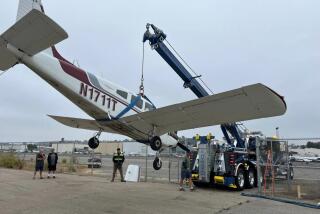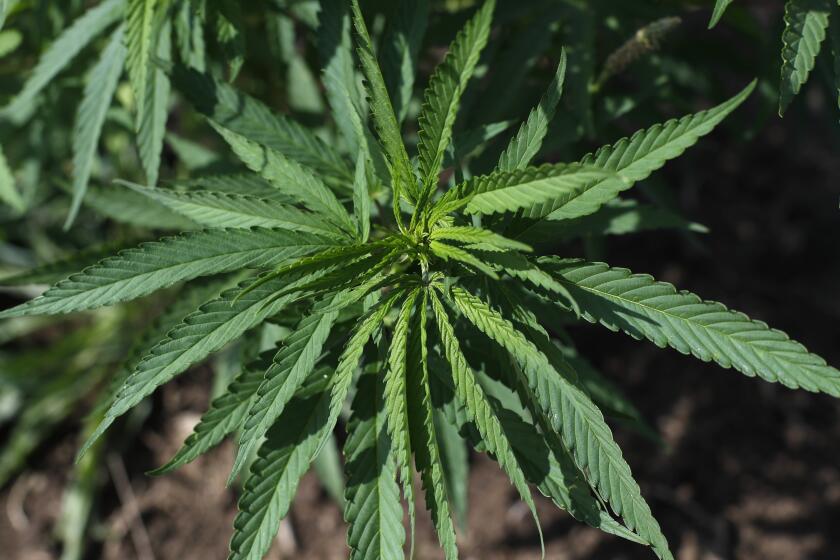Report Cites Marijuana, Alcohol in Plane Crash
A plane that crashed early this year at Burbank Airport, killing all four occupants, was carrying too much weight and the Thousand Oaks flight instructor who may have been piloting the craft had traces of alcohol and marijuana in his blood, the National Transportation Safety Board reported Tuesday.
The findings were not a ruling on the cause of the fiery crash on Jan. 18. They were contained in an investigator’s analysis of the crash that will be used by the safety board to determine a probable cause, a finding not expected for several months.
NTSB Air Safety Investigator Thomas H. Wilcox said it was unclear whether the amounts of alcohol and marijuana discovered were sufficient to have impaired a pilot’s judgment.
“Was his judgment impaired? Was his reaction time slow? I don’t know. But he crashed the plane,” Wilcox said.
The single-engine Piper Cherokee crashed shortly after taking off on a training flight to Santa Barbara with four certified pilots aboard. The victims were identified as Lawrence W. Anderson Jr., 30, of Thousand Oaks, who was also a flight instructor; Jeffrey Fader, 28, of Canyon Country; Ingvar H. Gronberg, 27, of Burbank, and George E. Kraft, 33, of Marina Del Rey.
Investigators found no engine malfunctions or other mechanical failure after examining the wreckage, officials said in January.
Wilcox said Tuesday that the total safe weight limit for the plane and its contents was 2,325 pounds, but the estimated weight with the four occupants, fuel and baggage was 110 pounds more than that.
He said the plane would have been able to take off at that weight, but the pilot also apparently attempted a steep banking turn, which doubled the “G-load” or gravity force on the plane, requiring an extreme amount of power to overcome the weight. It was unknown why the pilot attempted the 180-degree turn, which required the plane to bank at a 70-degree angle.
“The effect of the weight was compounded by the steep turn,” Wilcox said. “They hit a power limitation.”
Because the engine “just was not producing” enough power to cope with both the weight and the turn, the plane dropped almost vertically, its left wing striking the ground first, he said.
Fader was in the pilot’s seat and Anderson, the flight instructor, was in the co-pilot’s seat at the time of the crash. But only the steering yoke in front of Anderson was broken, indicating that he was gripping it--flying the plane--on impact, Wilcox said.
“Normally during an emergency situation, the flight instructor will take control,” he said.
Moments before the crash, one of the men in the plane radioed the Burbank tower that there was an emergency and that they needed to land immediately, but did not describe the problem.
Wilcox said that toxicological tests performed on Anderson’s body were positive for cannabinoids and ethanol, chemicals found in marijuana and alcohol. Wilcox declined to say how much of the chemicals were found.
Although it was not known if there was enough of either chemical to impair Anderson’s judgment, Wilcox said, it is a violation of federal rules for a pilot to fly a plane with any amount of those chemicals in the blood. “You can’t have a pilot’s license if those things come up positive on your medical tests,” he said.
Tests on the other victims found no alcohol or drugs, Wilcox said.
The plane had been leased to the Burbank-based Pilots Co-Op, a flying club. Club officials said the four men had used the plane on prior occasions for training flights.
More to Read
Sign up for Essential California
The most important California stories and recommendations in your inbox every morning.
You may occasionally receive promotional content from the Los Angeles Times.










